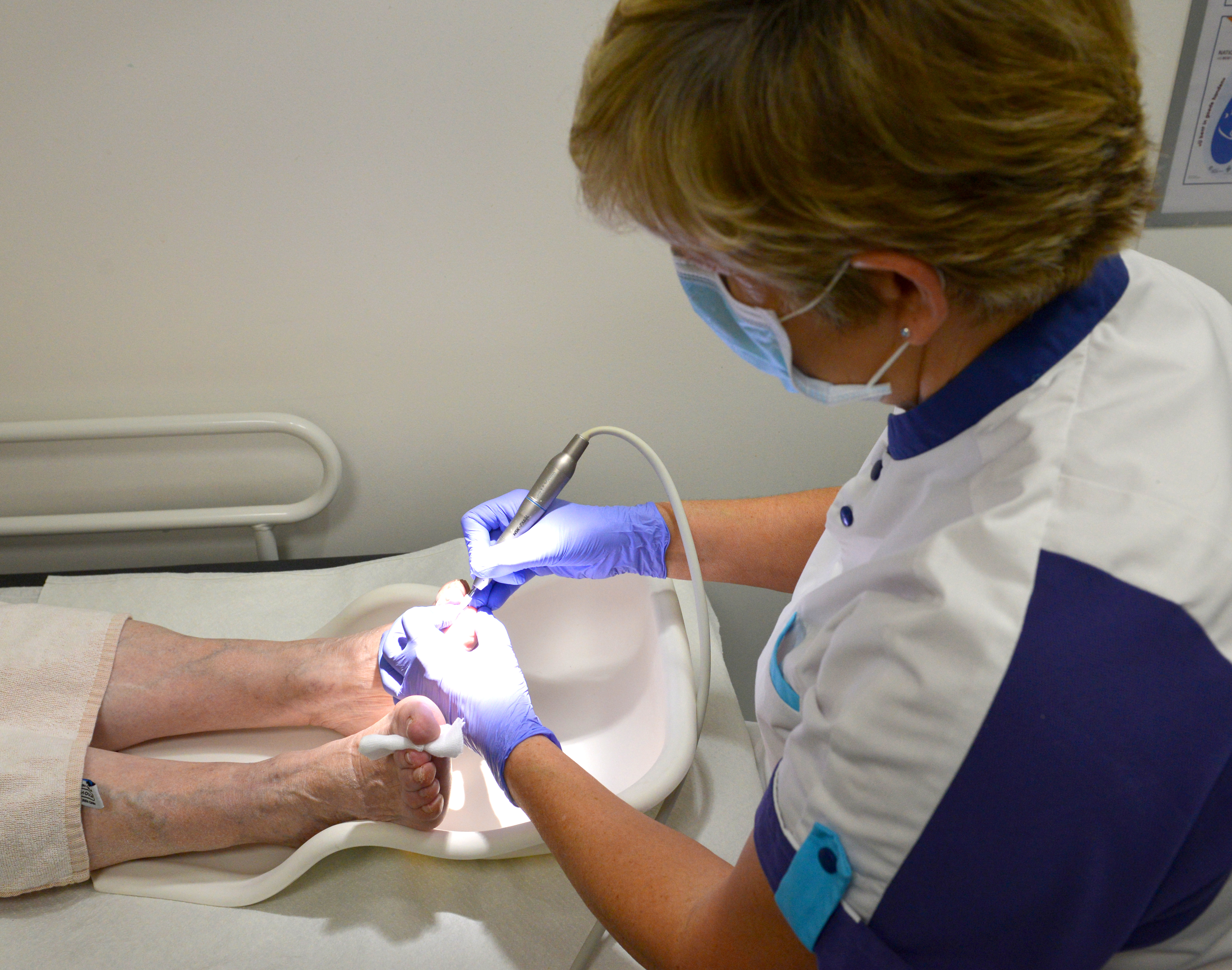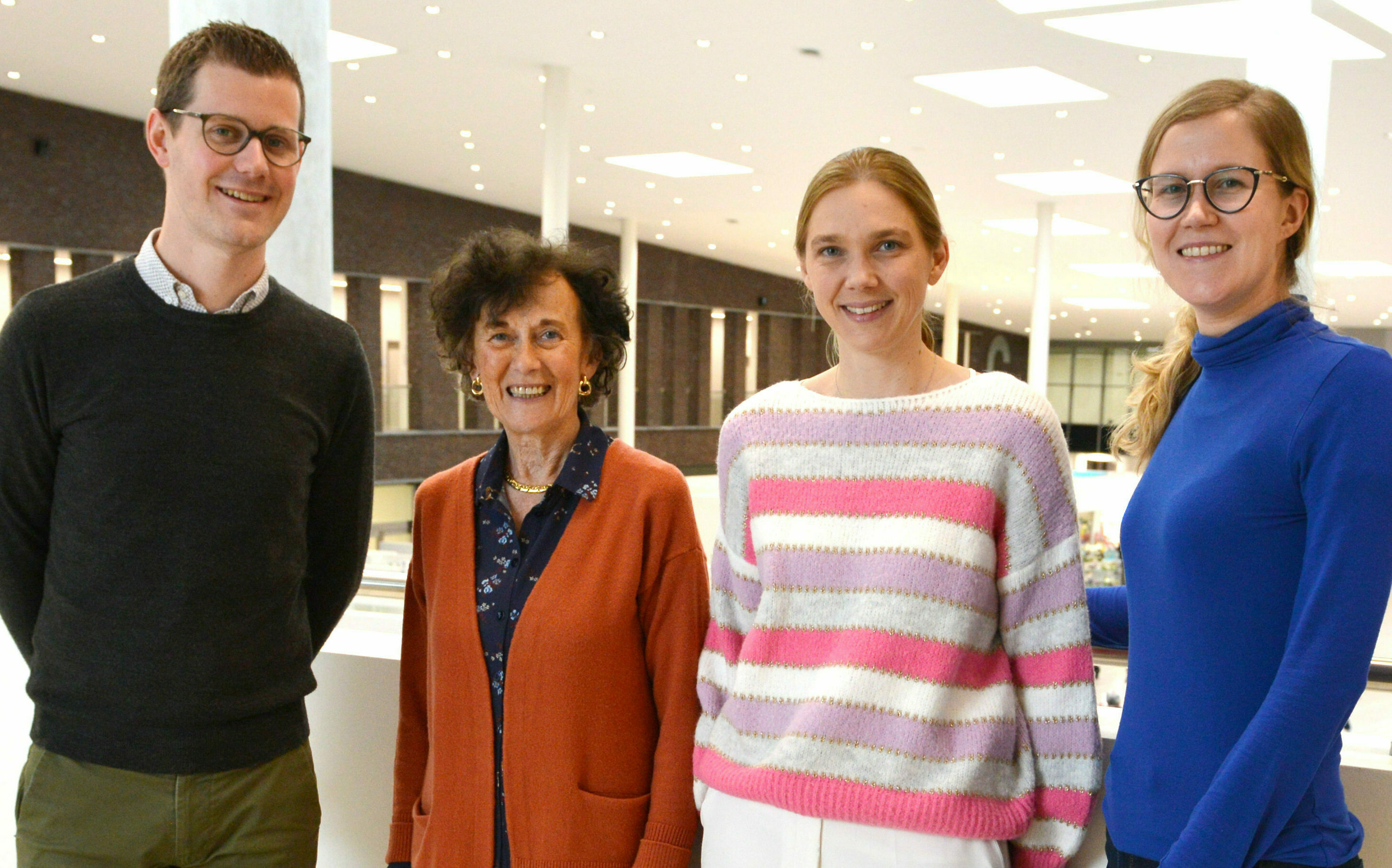Nail diseases
Symptoms and causes
Symptoms and causesNail anomalies are given a special place in our department and deserve a comprehensive approach. They are one of our partial specialisations.
There are various nail disorders, ranging from innocent disorders (e.g. overgrown toenails, ingrown toenails) to serious disorder (e.g. tumours of the nail plate).
What is it?
Many people get nails that no longer look as good; they discolour, become crumbly or thicken.
- Onychomycosis nails
- Onychomycosis is a thickening and yellow discolouration of the nail plate, without an underlying infection. They may be the result of prior trauma or of reduced blood supply to the nails (e.g. in the case of arteriosclerosis in the legs, smoking, etcetera).
- The treatment consists of flattening and keeping the nails soft, but complete healing is often not possible.
- Fungal nails
- Fungal nails can thicken the nail plate, with a typical yellowish-brown discolouration and flaking under the nail plate.
- During the consultation with the physician or nurse, a large sample of it will be taken.
- Treatment is possible with prolonged ingestion (usually several months) of antifungal medication and mechanical removal (milling) of the remaining diseased fungal fragments.
Other infections (bacterial, yeast infections) can also infect the nail and the skin around it. Adequate and targeted cultivation is important to start the right treatment.
Diagnosis and treatment
Diagnosis and treatment
Non-surgical treatment
An experienced, well-trained specialised nurse in nail and foot care works on the Dermatology Department:
She has particular expertise in:
- smoothing (milling) toenails that are too thick, collect nail fragments for examination
- placing wicks under ingrowing toenails
- hyperkeratoses: callous, exterogen
Nail surgery
We can categorise the nail disorders that we treat:
Biopsies for diagnosis
Pigmentation changes, inflammatory diseases (psoriasis, lichen, etc.)
Surgical removal
- Tumours (benign, malignant, praecanceroses):
mucoid cyst, periunal fibroids, fibrokeratomas, onychomatricoma, glomus tumour, exostoses, verrucae, botryomyncoma, praecanceroses such as Bowen’s disease, spinocellular epithelioma, melanoma - Ingrowing nails:
Classical ingrowing nails with/without hypergranulation tissue, pincer nail, retronychia.
Who can you turn to?
- ingrowing toenails
- tumours of the nail plate
- nail bed and nail matrix biopsies
- decrease of deep cultures
- mucoid cysts
For ingrown nails you can also contact:
Practical information
- Procedures are always carried out at Maria Middelares General Hospital and last thirty minutes on average.
- Arrive ten minutes in advance.
- Wear an open shoe (e.g. slipper, wide sandal) or bring one with you.
- Make sure that someone can take you home.
- On the day of the operation and the day after, you will not be able to work or go to school. It is also best not to plan any major activities on the weekend following the operation. The Monday after the procedure, a normal shoe can be worn again in most cases.
- Post-operative wound care depends on the procedure. Usually the bandage remains in place for 48 hours. The treated area may then be soaked in a lukewarm footbath. Afterwards, care with an antiseptic (disinfectant) is recommended.
- It is recommended to keep the foot up for the first 48 hours after surgery.

Treatment centres and specialisations
Treatment centres and specialisationsLatest publication date: 15/05/2024






